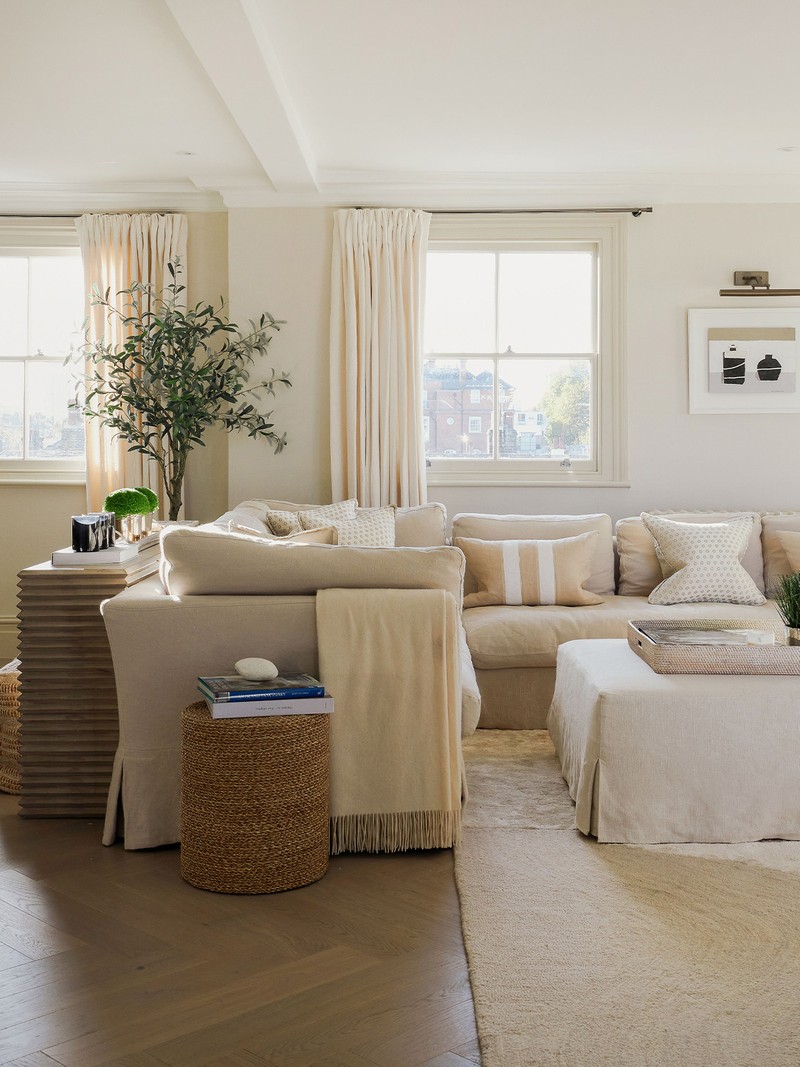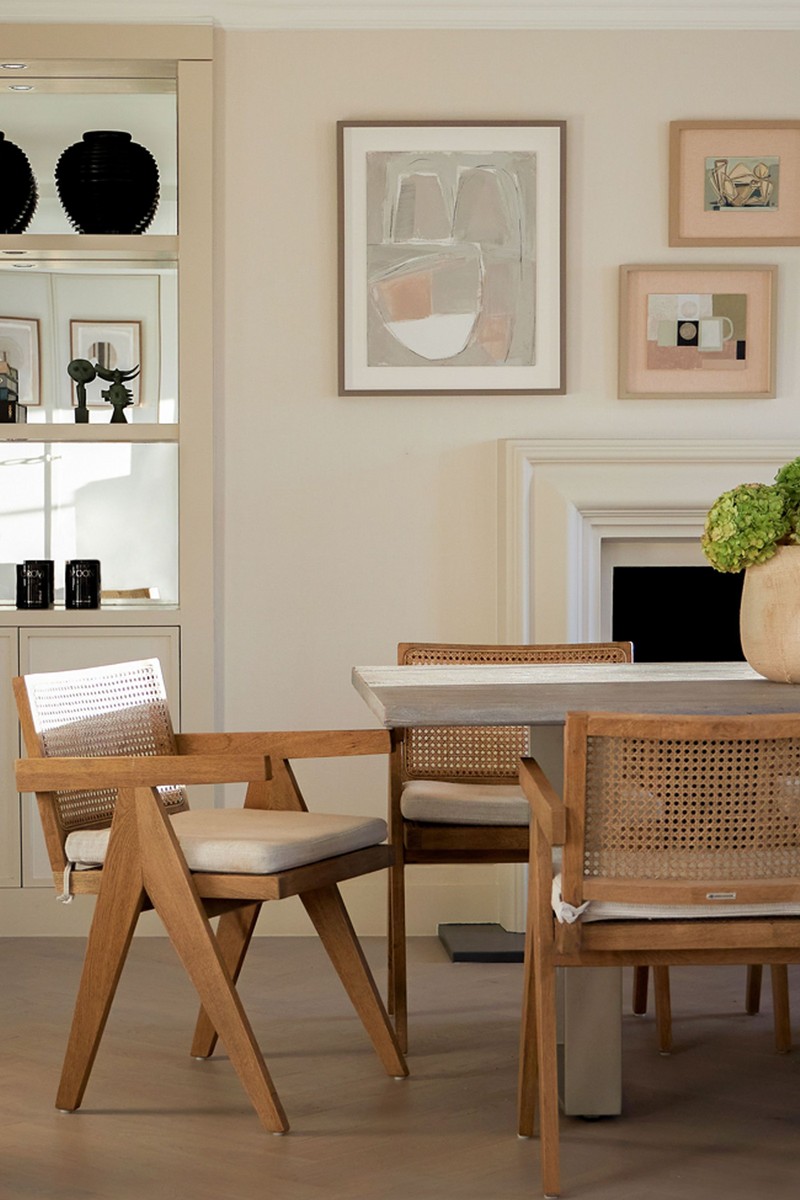The Most Important Advice Interior Designers Give Their Clients
Christian Bense
“The one question I find myself asking time and again is: is it right for this house? Another thing I always try to do is encourage my clients to stick to the brief. It’s important to know the difference between what is right and appropriate for this house, and what is just a nice idea. Not all ideas make it into a home, and nor should they. If you want to design a home that is thoughtful, rational and appropriate, you need to know when to separate what is nice from what is right.”
Visit ChristianBense.com
Bee Osborn
Osborn Interiors
“People often underestimate the importance of lighting. Never use ceiling lights on a grid system and always make all lighting dimmable. We tend to do pockets of lighting, starting from the floor up. Scale up on pieces because, even in small spaces, larger items make a room feel bigger. When it comes to the more expensive pieces, choose neutral colours and, if needed, add colour with cushions or throws. Remember, don’t follow trends; instead buy what you really love. To create a feeling of space, use infinity flooring – that means connecting the outside with the inside by closely matching what is underfoot. To make a room really inviting, use underfloor heating.”
Visit OsbornInteriors.com
Shonagh Gardiner
Studio Morey
“We advise our clients to invest in pieces that match their personal style as opposed to following a strict theme that they might want to change in the future. A key part of establishing your own style is mixing vintage pieces with contemporary ones. This allows you to curate a timeless aesthetic that maximises longevity, while giving you the freedom to add modern treasures as you go. Scouring vintage websites and purchasing art, photography and objects from artisans and craftspeople will help you find the special pieces that aren’t readily available on the high street. Unique items balanced alongside a carefully curated material palette ultimately forms the bedrock of a client’s identity.”
Visit StudioMorey.co.uk
Henry Prideaux
“It’s very important for me and the team to be creative and come up with inventive designs for our clients, but I always tell them this is their house and they will be the ones living in it day in and day out – so they need to be comfortable with all the colours, patterns, shapes and sizes. With open discussion, communication and collaboration between the designer and the client, the journey should be a smooth one. Also, don’t be afraid to tell a designer you don’t like something – it helps to focus the design direction and they’ll be happier knowing what you don’t like, as much as what you do.”
Visit HenryPrideaux.com
Clara Ewart
Kitesgrove
“Once you start refreshing specific areas, it can make others appear more tired – so bear this in mind when you’re working out what to focus on first. A simple coat of paint can make a home feel fresh and full of personality – as well as being a cost-effective way of changing the mood. If budget is an issue, prioritise key pieces such as window treatments, rugs and upholstery, and fill in the gaps with smaller pieces over time, such as side tables, table lamps, cushions and artworks. Don't rush the decisions. Take your time to absorb how you feel about a fabric, paint colour or a piece of furniture –anything done in haste tends to get revised. Finally, always get a proper sample so you can see what a fabric or colour looks like in situ – it will change in different lights and against other colours in the space.”
Visit Kitesgrove.com
Irene Gunter
Gunter & Co
“Return calls and answer emails. A big part of keeping your project on schedule is being responsive. Just as you wouldn’t expect your designer to disappear without warning, it also impacts the project if you don’t reply to emails or ignore calls for several days at a time. It may be a part of your designer’s terms and conditions that you get back to them within a set period of time, so be aware of this. Delays cost money and lead to frustration, so working together as a team and keeping the doors of communication open will always lead to a more satisfying experience.”
Visit GunterAndCo.com
Louise Wicksteed
Sims Hilditch
“A building project is like a finely tuned clock – if you have one weak link it will make the process much harder and more costly. Work with professionals you trust, who have a proven track record of delivering on time. Choose a competent, reliable and trustworthy contractor; this will make or break your project. And seeing as this is where the vast majority of the budget will be spent, allow for a 5% contingency. Lastly, ring-fence enough money for the decorative elements such as the curtains, furniture, lighting, rugs and art. These will be the items that bring you joy and make the interior feel finished. Investing wisely in timeless, high-quality pieces that you will love for many years is priceless. It may mean spending a little more initially, but the investment will be worthwhile.”
Visit SimsHilditch.com
Gail Taylor
TH2Designs
“I remember being told at a young age that you should listen to your gut and not to lose sight of your initial vision. There is so much choice in out there – and whether you're buying a property, changing your colour scheme or have a life-changing idea for your home, it's all too easy to get distracted. When I see a new space, whether it’s on plan or walking in to a new project, the ideas I get at first glimpse are often the best. When a client comes to us with their own ideas, we try to ensure we listen and incorporate them as much as possible – without ignoring our gut.”
Visit TH2Designs.co.uk
DISCLAIMER: We endeavour to always credit the correct original source of every image we use. If you think a credit may be incorrect, please contact us at info@sheerluxe.com.










